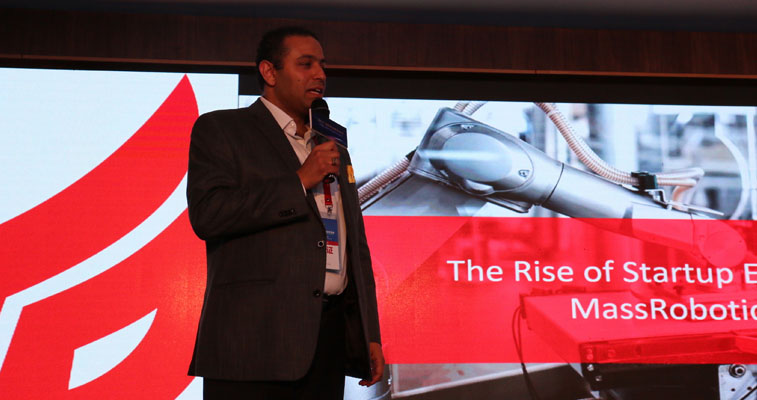You can’t escape the hype around robotics and AI. From Elon Musk to Mark Zuckerberg, everyone has a strong view on what the future holds and how it will transform the way we live. However, if we are to capitalize on the promise of AI and robotics, the investment model to support them needs to adapt or they will face extinction before they even begin.
The last five years have seen an explosion in successful app and software startups including Airbnb, Dropbox, and Uber. These types of organizations are less capital-intensive than robotics and the established incubator-to-accelerator- model has proven to be extremely effective.
However, robotics startups are one of several “tough technologies” that face many barriers to entry and stumbling blocks that traditional startup support organizations are not equipped to deal with. For example, a key hurdle they often face is access to highly specialized and expensive equipment. This need has resulted in the evolution of the “startup escalator”. These escalators help organizations developing capital-intensive, long-time-scale products that rely on these types of technologies.
The DNA of a Startup Escalator
Startup escalators are always on, you just step on them whenever you are ready to move from one level to the next.
-
Startup escalators are industry-focused
-
Startup escalators provide specialized equipment and infrastructure
-
Startup escalators should attract a network of specialized investors, corporate partners, and service providers
-
Startup escalators deploy a rent or membership based model
-
Startup escalator programs are not constrained by a fixed duration
In the case of robotics, companies need access to machining facilities and equipment, 3D printing, electronics labs, and testing tools; but these resources are out of reach for an early stage organization to buy. A startup escalator is unique in helping “tough tech” companies to overcome these substantial barriers to entry, providing significant value that other startup support models fail to provide.
These escalators are already starting to gain traction. In the Boston area alone, three escalators have been created over the last few years to fuel the growth of several different types of “tough tech” startups.
-
Cambridge-based Lab Central focuses on biomedical startups and provides wet labs for experiments and testing, in addition to offering an all-inclusive co-working space.
-
Greentown Labs in Somerville focuses on clean energy companies and provides specialized machine shop and testing facilities.
-
MassRobotics in the Boston’s Seaport Innovation District, which focuses on robotics and AI startups and is already looking for more space.

The State of Massachusetts has recognized the opportunities and challenges and has invested in all three of the escalators to help fuel innovation within the state. This symbiotic relationship is essential for tough technologies to make the leap from concept to commercialized product.
It is not just in North America where escalators are gaining traction alongside the established accelerator model. As I have traveled the globe, I have seen lots of needs and initiatives sprouting up to fuel innovation, particularly in robotics.
-
ThinkZone operates a technology park in Chengdu, China hosting multiple incubators and accelerators that are focused on specific industries. The stated goal of this is to try and catch up on hardware innovation.
-
In France, the city of Lyon has taken an industry-focused approach to innovation and has made significant investments in biotech infrastructure, and it is now looking at sectors like robotics. INSA, the largest academic institution in the city has been running an independent incubation organization that will ultimately need an escalator to evolve its incubated startups.
-
In Chile, CORFO, the main economic development organization in the country, has made significant investments in innovation and entrepreneurship and has been focused on high growth sectors like advanced manufacturing/mining, agriculture, and clean energy. With the support of MIT Regional Entrepreneurship Acceleration Program (REAP), the government has been developing a national strategy to continue the country’s success in nurturing startups.
-
In UAE, the country recently created Dubai Future Accelerators in partnership with individual government ministries to tackle their different needs.
It is clear that governments and investors need to bolster the innovation ecosystem if we are to realize the benefits of robotics and AI and other tough technologies. In the case of robotics, it is evident that startups have unique needs and require another type of ecosystem to help them flourish. The next five years will be illuminating in determining how the investment ecosystem adapts across the globe, not only to make smart investments in robotics and AI but also supporting startup escalators to secure and safeguard these investments.
The international community needs to rethink its investment ecosystem to enable the promise of robotics to become a reality. Rather than focusing on the prospect of if machines will replace man, let’s at least create an environment to test and scale the possibilities these potentially life changing new technologies bring rather than being dead on arrival.

